|
|

|
Porsche, and the Porsche crest are registered trademarks of Dr. Ing. h.c. F. Porsche AG.
This site is not affiliated with Porsche in any way. Its only purpose is to provide an online forum for car enthusiasts. All other trademarks are property of their respective owners. |
|
|
| L-Jet914 |
 Feb 25 2025, 11:35 PM Feb 25 2025, 11:35 PM
Post
#1
|
|
Member   Group: Members Posts: 374 Joined: 24-October 12 From: Davis, CA Member No.: 15,080 Region Association: Northern California |
I was installing my new ignition and FI harnesses today and I decided to look back at the vacuum hose routing diagram on Jeff Bowlsby's website. I knew my vacuum hose routing had been modified by whatever technician worked on my father's 74 914 1.8 years ago. I noticed that they teed the vacuum retard side of the vacuum advance into ported vacuum off of the intake plenum. According to the vacuum routing hose diagram, it's supposed to be connected to the rear port of the throttle body (which only gets vacuum after the throttle plate moves off idle). Would there be any reason the technician did this? I will end up rerouting the vacuum hose to the proper location. I'm just curious as to why it was modified for whatever reason. So would my 74 1.8 be considered a early or late 1.8? According to the late diagram and the throttle body that is in the car, the hose should route to the front port instead of the rear port.
The part number on the throttle body in the car 022133067C which fits either a Super Beetle 75-79, 76-83 Bus, or 83-84 Vanagon (two port t-body). According to the PET on AA's website shows two different throttle bodies 022133062L or 022133062S for California spec 1.8L 914s. The Porsche PET does not list a throttle body part number for the 1.8, only the 1.7 and 2.0s. Curious as to why someone would put the wrong part number throttle body on my 914, though it does have the 3 pin throttle position sensor. Port setup would be indicative of late 74 because the required port (front of throttle body pointing toward front of vehicle) is behind the throttle plate. Attached thumbnail(s) 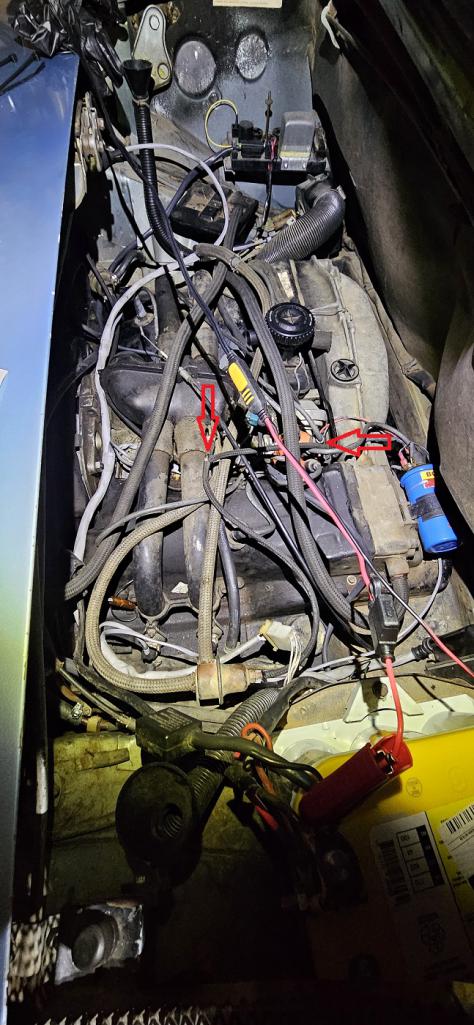 Attached image(s) 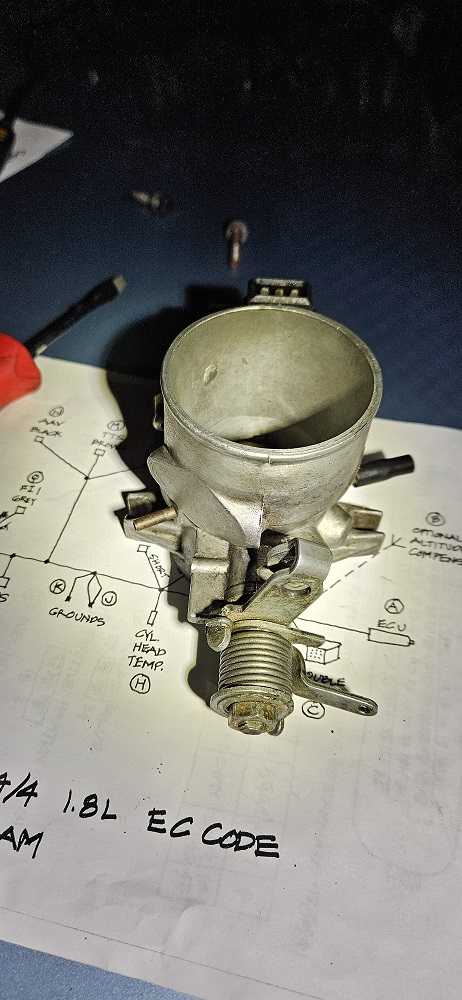 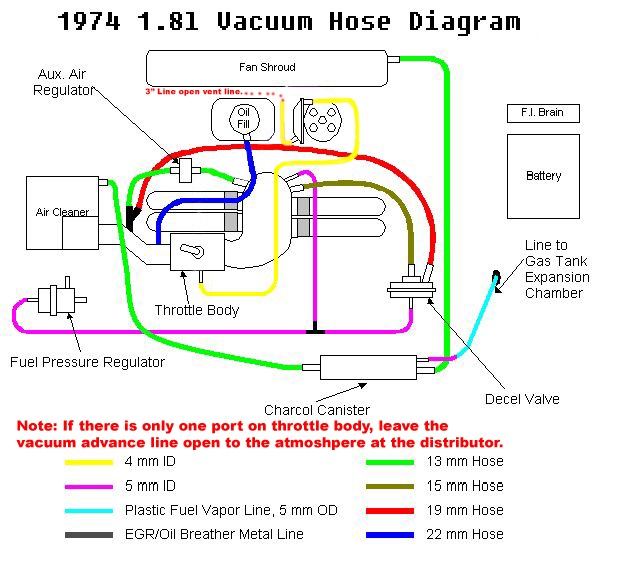 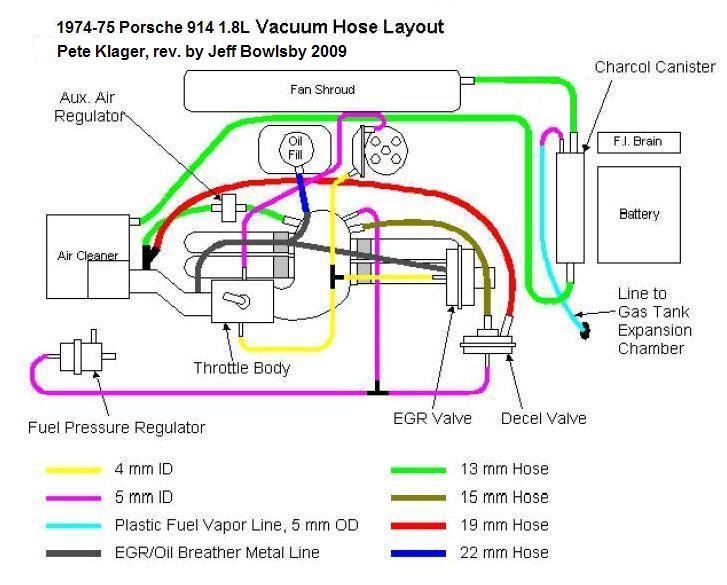
|
  |
Replies
| Fazasport |
 Feb 27 2025, 06:17 AM Feb 27 2025, 06:17 AM
Post
#2
|
|
Newbie  Group: Members Posts: 9 Joined: 7-November 23 From: Tallahassee FL Member No.: 27,713 Region Association: South East States |
I have a 1976 914 2.0 with D-Jet and no modifications. My throttle body has one vaccum port and my distributor has two nipples for vaccum lines. One nipple is on the front of the vaccum canister and the other is on the rear.
My question is which port on the vaccum canister does the line from the throttle body go to, front or rear and what to do with the other port on the canister. Currently the port on the front of the canister has a 3" section of vaccum hose attached with a screw inserted into the hose to cap it off. Thanks for your help. John Sipay Tallahassee, FL |
| wonkipop |
 Feb 27 2025, 06:21 PM Feb 27 2025, 06:21 PM
Post
#3
|
|
914 Guru      Group: Members Posts: 5,304 Joined: 6-May 20 From: north antarctica Member No.: 24,231 Region Association: NineFourteenerVille 
|
I have a 1976 914 2.0 with D-Jet and no modifications. My throttle body has one vaccum port and my distributor has two nipples for vaccum lines. One nipple is on the front of the vaccum canister and the other is on the rear. My question is which port on the vaccum canister does the line from the throttle body go to, front or rear and what to do with the other port on the canister. Currently the port on the front of the canister has a 3" section of vaccum hose attached with a screw inserted into the hose to cap it off. Thanks for your help. John Sipay Tallahassee, FL i don't know much about the 2.0 L cars. i believe @JeffBowlsby would know this one for sure. but...if the 75 2.0 D jets are anything like 75 1.8 L jets then advance canister on the distributor would be deactivated and left open to the atmosphere. it does sound like yours is just like the 1.8 L Jets if it has a 3 inch section of hose attached to it. thats what the L jets had in 75 and in california in 74. though from factory the hose was not plugged with a cap or a screw or anything else. reason being they wanted that canister to be at atmospheric pressure and exert no influence over the dist. the short length of hose was a way of keeping dirt, dust and muck out of the can interior. the short hose was just tucked under the inlet plenum on the 1.8s. don't know what they did on 2.0s, might have been tucked somewhere or left to flap in the wind so to speak. the retard side of the canister, the smaller side (on the dist side) was connected to the single (only one) port on the t/b on the 1.8s. this port was below the throttle plate on the engine intake plenum side of the t/b. it sounds to me like you have a 49 states, non california 2.0 with no cat if it only has one port on the throttle body. 49 state cars did not have EGR. i think the californian cars had two ports. one for dizzy hook up to retard can (below throttle plate) and one for EGR above throttle plate. jeff bowlsby would know for sure. in 75 the 49 state 1.8s only had one port on t/b. but the california ones had two ports/ seems like the 2.0s might have been similar. the 76 cars were identical to the 75 cars in terms of emission and hose set up. EGR diagram for a 75 1.8 california. this shows the EGR hook up to correct port, but the diagram excludes all other info. . 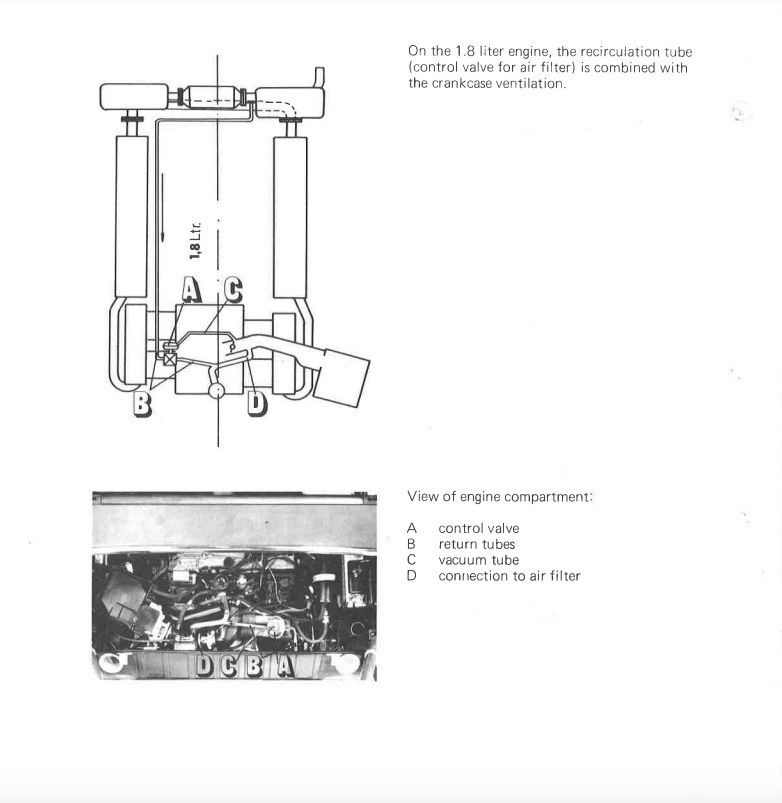 EGR diagram for a 75 2.0 california. shows egr hook up but excludes all other info. 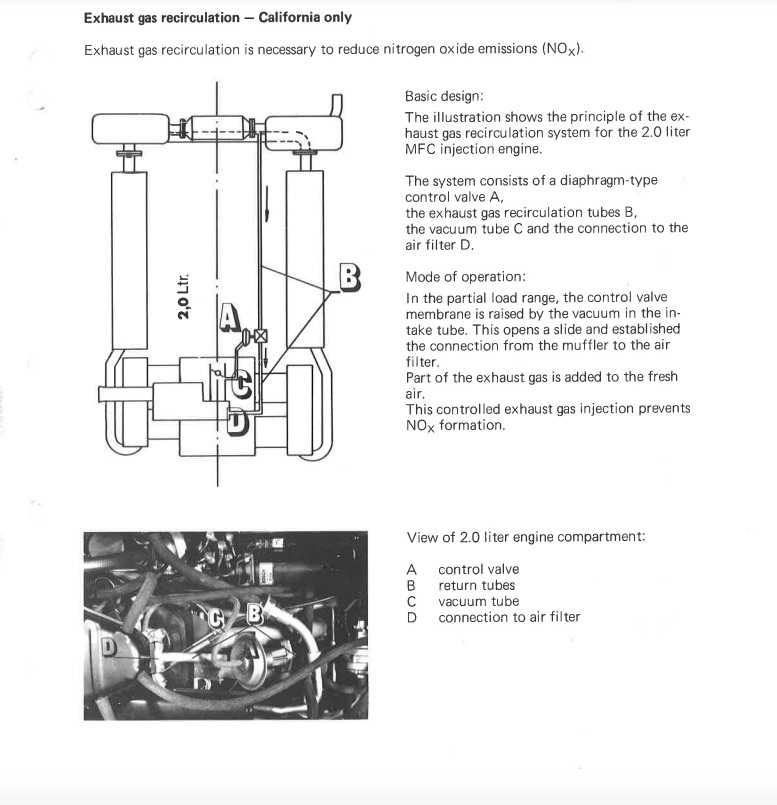 |
Posts in this topic
 L-Jet914 vacuum hose routing question Feb 25 2025, 11:35 PM
L-Jet914 vacuum hose routing question Feb 25 2025, 11:35 PM
 wonkipop the authorative hose diagrams are here mate. bott... Feb 26 2025, 04:37 AM
wonkipop the authorative hose diagrams are here mate. bott... Feb 26 2025, 04:37 AM

 L-Jet914
the authorative hose diagrams are here mate. bot... Feb 27 2025, 10:21 PM
L-Jet914
the authorative hose diagrams are here mate. bot... Feb 27 2025, 10:21 PM
 JeffBowlsby Michael is the L-Jet MAN. That diagram on my site... Feb 26 2025, 09:09 AM
JeffBowlsby Michael is the L-Jet MAN. That diagram on my site... Feb 26 2025, 09:09 AM

 StarBear
Michael is the L-Jet MAN. That diagram on my sit... Feb 26 2025, 02:04 PM
StarBear
Michael is the L-Jet MAN. That diagram on my sit... Feb 26 2025, 02:04 PM

 wonkipop
Michael is the L-Jet MAN. That diagram on my si... Feb 26 2025, 02:39 PM
wonkipop
Michael is the L-Jet MAN. That diagram on my si... Feb 26 2025, 02:39 PM
 wonkipop @L-Jet914
i looked up the PET i have on file and... Feb 26 2025, 02:12 PM
wonkipop @L-Jet914
i looked up the PET i have on file and... Feb 26 2025, 02:12 PM
 wonkipop @L-Jet914
if you think i have mixed up the let... Feb 26 2025, 02:29 PM
wonkipop @L-Jet914
if you think i have mixed up the let... Feb 26 2025, 02:29 PM
 wonkipop for your interest @L-Jet914 .
here is an image ... Feb 26 2025, 03:52 PM
wonkipop for your interest @L-Jet914 .
here is an image ... Feb 26 2025, 03:52 PM
 wonkipop @L-Jet914
david - that throttle body looks ident... Feb 28 2025, 10:57 AM
wonkipop @L-Jet914
david - that throttle body looks ident... Feb 28 2025, 10:57 AM

 L-Jet914
[b]@[url=http://www.914world.com/bbs2/index.php?s... Feb 28 2025, 07:57 PM
L-Jet914
[b]@[url=http://www.914world.com/bbs2/index.php?s... Feb 28 2025, 07:57 PM
 Rob-O Beyond all the hooking up of vacuum lines, the cha... Mar 3 2025, 07:35 AM
Rob-O Beyond all the hooking up of vacuum lines, the cha... Mar 3 2025, 07:35 AM

 wonkipop
Beyond all the hooking up of vacuum lines, the ch... Mar 3 2025, 05:53 PM
wonkipop
Beyond all the hooking up of vacuum lines, the ch... Mar 3 2025, 05:53 PM
 L-Jet914 Sorry for opening up a can of worms haha. When I r... Mar 4 2025, 12:35 AM
L-Jet914 Sorry for opening up a can of worms haha. When I r... Mar 4 2025, 12:35 AM

 emerygt350
Sorry for opening up a can of worms haha. When I ... Mar 4 2025, 08:39 AM
emerygt350
Sorry for opening up a can of worms haha. When I ... Mar 4 2025, 08:39 AM

 L-Jet914
Sorry for opening up a can of worms haha. When I... Mar 4 2025, 04:39 PM
L-Jet914
Sorry for opening up a can of worms haha. When I... Mar 4 2025, 04:39 PM

 wonkipop
Sorry for opening up a can of worms haha. When I... Mar 5 2025, 04:34 AM
wonkipop
Sorry for opening up a can of worms haha. When I... Mar 5 2025, 04:34 AM

 L-Jet914
Sorry for opening up a can of worms haha. When I... Mar 9 2025, 11:16 PM
L-Jet914
Sorry for opening up a can of worms haha. When I... Mar 9 2025, 11:16 PM
 emerygt350 Maybe my next CAD project. Mar 4 2025, 05:47 PM
emerygt350 Maybe my next CAD project. Mar 4 2025, 05:47 PM

 L-Jet914
Maybe my next CAD project.
Oooo. That would be a... Mar 4 2025, 05:54 PM
L-Jet914
Maybe my next CAD project.
Oooo. That would be a... Mar 4 2025, 05:54 PM
 emerygt350 I think I might have to try this project. Mar 4 2025, 07:25 PM
emerygt350 I think I might have to try this project. Mar 4 2025, 07:25 PM
 emerygt350 Yes, there is definitely that "driving a lazy... Mar 5 2025, 05:25 AM
emerygt350 Yes, there is definitely that "driving a lazy... Mar 5 2025, 05:25 AM  |
1 User(s) are reading this topic (1 Guests and 0 Anonymous Users)
0 Members:

|
Lo-Fi Version | Time is now: 28th December 2025 - 12:03 AM |
Invision Power Board
v9.1.4 © 2025 IPS, Inc.








